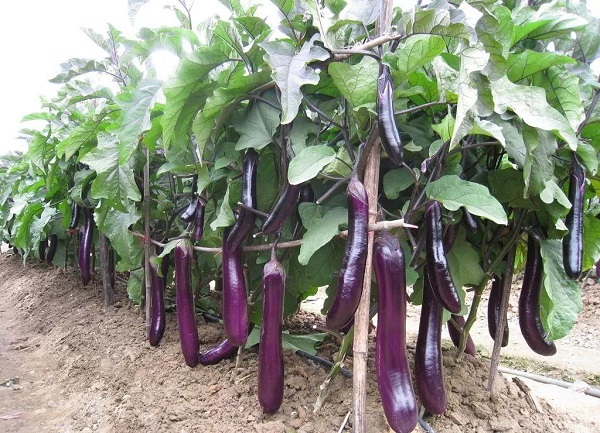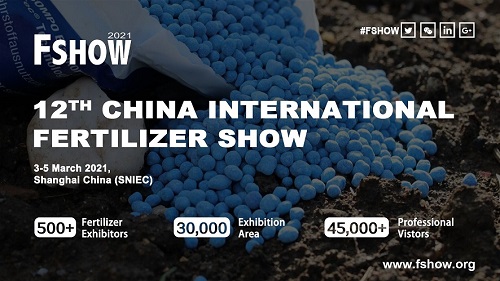
Exhibition time: 17-19 March, 2026 Shanghai, China
 中文
中文

Exhibition time: 17-19 March, 2026 Shanghai, China
 中文
中文
In this article we will discuss about the uses and limitation of fertilizers.
The fertilizers are added to the soil to provide proper nourishment to the plant in order to fully utilize their genetic potential. The use of fertilizers has added to the advantage of the agricultural and horticultural outputs. Fertilization operations involve supply of nutrient substances to the plant for its nutritional demands.
Thus, desired morphological and physiological features are developed to produce high yields. Fertilization regulates the dependability and amount of yield. If no fertilization is carried out, soils become depleted of minerals. In dwarf-wheat’s the high productivity is fertilization dependent. By applying fertilizers, several acres of fallow land have been developed and subjected to cultivation.

By regulating the supply of minerals through fertilization, the quality of products can be altered. Thus oil content in groundnut, proteins in wheat, sugar content in sugar beet and protein and minerals in fodders have been manipulated through fertilization.
High yield per unit area also brings about a reduction in production costs. This aspect also takes care of the maintenance of the environment by permitting a protective and regulatory plant cover to be maintained. In fact, without the use of proper and adequate fertilizers, it is not possible to guarantee an adequate supply of food production.
In order to achieve efficient use of fertilizers following drawbacks may be encountered:
i. Non-supply of NPK where high yielding varieties need a constant supply of nutrients in the soil.
ii. Neglecting to supply trace and other elements.
iii. Supplying NPK but not adding elements like copper to affect efficient use of N.
iv. Incorrect diagnosis of mineral requirements.
v. Not considering the basic soil structure and soil reaction.
vi. Over-manuring causing salt damage due to large applications of soluble fertilizer to seed.
Fertilizers—How to select and use them:
Before applying any fertilizer it is essential to define the goals. The chief aim is to improve specific factors. Both agronomic and economic considerations should be borne in mind in determining the use of specific fertilizers. It is also imperative to bear in mind the side effects and possible fertilizer losses with specific kinds.
Nitrogen Fertilizer:
Two main sources of nitrogen are utilized and these are ammonium and nitrates. They differ in regard to side effects and losses. Under tropical conditions, the normal division of nitrogen fertilizers into quick and slow acting forms has to be modified.
All the nitrogen fertilizers normally used in agriculture are relatively quick acting at high temperatures. If the soil conditions are not anaerobic, the breakdown of urea to ammonium and the further oxidation of ammonium to nitrate occur quickly. For rice crop ammonium fertilizers are usually better than nitrates. One of the important side effects of nitrogen fertilizers is their influence on soil reactions.
If the soils are neutral or slightly alkaline, the acid reaction of ammonium and urea fertilizer is positive.
Thus, it causes mobilization of phosphate and heavy metals. On acid soilsit has a negative effect. Of the sub-components of nitrogen fertilizers, sulphate as in ammonium sulphate has a positive effect where there is deficiency of sulphur, but it has a negative effect under very reducing conditions and leads to sulphide formation. It is important to bear in mind the toxic by-products of fertilizers.

Then there are fertilizer losses as in gaseous, dissolved and solid forms. On neutral and alkaline soils their can be ammonium losses form ammonium fertilizers, while on wet soils nitric oxides can be formed from nitrate fertilizers. Losses in a dissolved form are to be expected on very permeable, heavily- saturated soils and also where there is excessive watering.
Phosphate Fertilizer:
The choice of water-soluble or water insoluble phosphates depends upon the nature of soil. For instance, water insoluble phosphates do better on acid soils. The sub-component is variable. It could be sulphate, sodium, silicon, etc.
Potash Fertilizer:
The cheap potash chloride is widely used. They are most needed on humid mineral soils.
Multi-Nutrient Fertilizers:
It is very important to choose the correct nutrient ratio. There are specific advantages of single and multi-nutrient fertilizers.
Use of Trace Nutrient Fertilizers:
These are best applied in soil or used as foliar sprays. Often micro-nutrients are used as organic metal chelates that keep trace elements available in the soil. The use of organic fertilizer like farm compost is essential for improving soil fertility. They also improve the structure of extreme soils. Soil analysis, plant and other reliable diagnostic methods are “used to determine the optimum quantity of fertilizer.
Soils and Fertilization:
(i) Humid tropical soils:
These soils are red or yellow. These areas have high precipitation, less minerals due to leaching, strong rate of breakdown. For proper use of fertilizers these characteristics may be borne in mind.
(ii) Acid tropical soils:
In the humid zones, due to excessive leaching and soil formation over long periods, the soils become acidic. Acidity is an intricate problem and is injurious to plants both in the deficient and surplus states. Liming these soils is very important. Not all the soils respond to lime treatments. Indeed liming has several fold effects on acid soils.
In the following a brief summary is given:
It may be mentioned that liming of very acidic soils provides right conditions for high yields but additional fertilizers must be eliminated.
Fertilization on dry soils:
Dry soils are characterized by the general lack of hormony in the available nutrients. Arid soils vary in regard to nutrients. They may lack nitrogen because of low humus content but phosphate and potash are better in arid soils. Similarly sulphur and magnesium supplies are also relatively good.
Plants growing in the arid soils are well equipped with calcium. N- Fertilizer application is essential in intensive farming. The supply of trace elements greatly depends upon soil reaction. In most situations, iron deficiency causes lime chlorosis but manganese deficiency is rarely encountered.
Plants growing on saline soils suffer not only from a lack of water but also from nutritional disturbance. There is excess of some ions (sodium, sulphate, borate) and deficiency for others (potassium, calcium).
This causes nutritional stress. If the soils are magnesium rich, calcium deficiency may develop. It is a well admitted fact that all production factors are closely interrelated and all possible ways of supplying fertilizers and their effects on plant production should be considered.
This is especially true of stress situations which arise often in tropics e.g., dryness, heat, cold, radiations, storms and infection, etc. If the temporary stress situations persist there is a danger of low yields. In recent years much attention is being given to fertilization for high yields and nutritional quality.
Here all the growth factors of the plant must be taken into account and optimized. In rice through increased manuring, boosting other minimum factors and by increased applications of organic manure it is possible to raise yields to more than 10 tons of rice grain per hectare.
In tropics it is also desired to raise good food quality. This is especially needed in the areas where produce is lesser in amount. The contents of essential amino acids, fatty acids, vitamins and minerals essential for nutrition are increased by manuring. Thus nitrogen compounds are used increasingly.
In the following the influence of fertilization on food quality is summarized:
i. Raising the nutrient supply from deficient to optimal stage increases yield,
ii. Essential components are increased, and
iii. Amount of essential minerals is raised in several important crops.
In essence it may be stated that properly used mineral fertilizers are as valuable as natural organic fertilizers.
Increased application of fertilizers increases food value. In several vegetables (e.g. tomato, potato) and cereals the amounts of minerals increase.
From BiologyDiscussion
